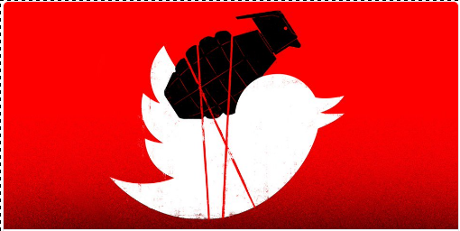War Goes Viral – How social media is being weaponized across the world by Emerson T. Brooking and P. W. Singer.
One of the highlights of the post reads:
…
Perhaps the greatest danger in this dynamic is that, although information that goes viral holds unquestionable power, it bears no special claim to truth or accuracy. Homophily all but ensures that. A multi-university study of five years of Facebook activity, titled “The Spreading of Misinformation Online,” was recently published in Proceedings of the National Academy of Sciences. Its authors found that the likelihood of someone believing and sharing a story was determined by its coherence with their prior beliefs and the number of their friends who had already shared it—not any inherent quality of the story itself. Stories didn’t start new conversations so much as echo preexisting beliefs.This extreme ideological segregation, the authors concluded, “comes at the expense of the quality of the information and leads to proliferation of biased narratives fomented by unsubstantiated rumors, mistrust, and paranoia.” As smartphone cameras and streaming video turn every bystander into a reporter (and everyone with an internet connection into an analyst), “truth” becomes a matter of emotional resonance.
…
Ooooh, “…’truth’ becomes a matter of emotional resonance.”
That is always true but give the authors their due, “War Goes Viral” is a masterful piece of propaganda to the contrary.
Calling something “propaganda,” or “media bias” is easy and commonplace.
Let’s do the hard part and illustrate why that is the case with “War Goes Viral.”
The tag line:
How social media is being weaponized across the world
preps us to think:
Someone or some group is weaponizing social media.
So before even starting the article proper, we are prepared to be on the look out for the “bad guys.”
The authors are happy to oblige with #AllEyesOnISIS, first paragraph, second sentence. “The self-styled Islamic State…” appears in the second paragraph and ISIS in the third paragraph. Not much doubt who the “bad guys” are at this point in the article.
Listing only each change of current actors, “bad guys” in red, the article from start to finish names:
- Islamic State
- Russia
- Venezuela
- China
- U.S. Army training to combat “bad guys”
- Israel – neutral
- Islamic State (Hussain)
The authors leave you with little doubt who they see as the “bad guys,” a one-sided view of propaganda and social media in particular.
For example, there is:
No mention of Voice of American (VOA), perhaps one of the longest running, continuous disinformation campaigns in history.
No mention of Pentagon admits funding online propaganda war against Isis.
No mention of any number of similar projects and programs which weren’t constructed with an eye on “truth and accuracy” by the United States.
The treatment here is as one-sided as the “weaponized” social media of which the authors complain.
Not that the authors are lacking in skill. They piggyback their own slant onto The Spreading of Misinformation Online:
…
This extreme ideological segregation, the authors concluded, “comes at the expense of the quality of the information and leads to proliferation of biased narratives fomented by unsubstantiated rumors, mistrust, and paranoia.” As smartphone cameras and streaming video turn every bystander into a reporter (and everyone with an internet connection into an analyst), “truth” becomes a matter of emotional resonance.
…
How much of that is supported by The Spreading of Misinformation Online?
- First sentence
- Second sentence
- Both sentences
The answer is:
This extreme ideological segregation, the authors concluded, “comes at the expense of the quality of the information and leads to proliferation of biased narratives fomented by unsubstantiated rumors, mistrust, and paranoia.”
The remainder of that paragraph was invented out of whole clothe by the authors and positioned with “truth” in quotes to piggyback on the legitimate academic work just quoted.
As smartphone cameras and streaming video turn every bystander into a reporter (and everyone with an internet connection into an analyst), “truth” becomes a matter of emotional resonance.
Is popular cant among media and academic types but no more than that.
Skilled reporting can put information in a broad context and weave a coherent narrative, but disparaging social media authors doesn’t make that any more likely.
“War Goes Viral” being a case in point.
